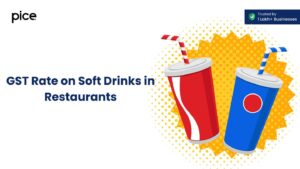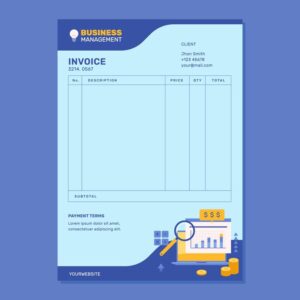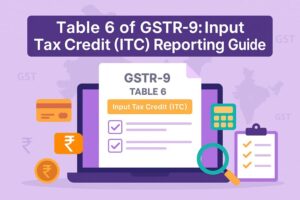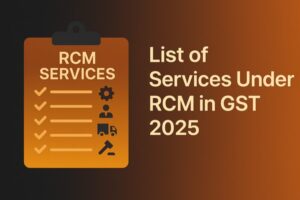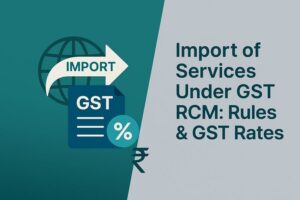Common Credit in GST
- 28 Jan 25
- 12 mins

Common Credit in GST
Key Takeaways
- ITC is only claimable for business purposes, not personal or exempt supplies.
- Common credit (C2) must be proportionately allocated between taxable and non-taxable uses.
- ITC reversal is mandatory for exempted supplies and personal use under GST rules.
- Accurate ITC calculations prevent penalties and ensure compliance with GST laws.
- Expert advice helps businesses navigate complex GST and ITC regulations effectively.
In the Goods and Services Tax (GST) framework, common credit is the input tax credit a taxpayer can claim on goods and services for taxable as well as exempted supplies. Businesses are eligible to claim ITC for taxes paid on input goods and services applicable to taxable supplies. The ITC on exempt supplies for personal use should be reversed. Businesses should claim common credit proportionately.
The taxpayers are not eligible to claim credit on input goods used for personal purposes. Thus, the use of the common credit proportionately while paying out output tax liability and GST liability is essential.
Significance of Common Credit in GST
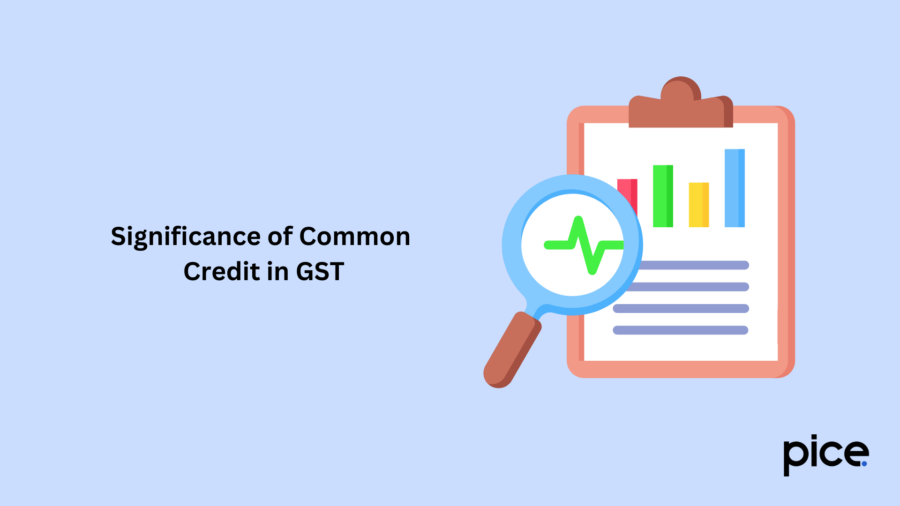
The input tax credit is permitted only for business purposes. Many traders utilize the same inputs for both personal reasons and furtherance of business uses. An individual taxpayer, however, is not eligible for claiming any input credit for the GST paid towards personal expenses.
Moreover, commodities exempted from GST already have 0% GST applicable. All these goods cannot be claimed further for the input tax credit as it might result in negative taxes. Thus, it is essential for the elimination of input tax credits for these exempted goods, which are subjected to GST liability.
There are some common credits applicable for personal and exempted supplies, leaving only the portion that deals with taxable supplies. While filing for GST returns, there is a noticeable amount that can be further claimed as ITC. Moreover, the credit attributable to exempt and personal supplies is reversed in Form GSTR-2.
How to Use Common Credit in GST?
Allocation of common credit is important for compliance, and the portion relating to taxable supplies is only claimed. Businesses should abide by the GST rules for accurate credit calculation, ensuring determination of tax liabilities while avoiding penalties.
There are two basic rules to consider for the use of common credit in GST:
ITC for Business Purposes Only
If any goods and services are used relating to business purposes instead of non-business purposes, ITC can be claimed. However, if the goods are utilized for personal consumption, you cannot claim ITC or use it.
ITC for Sale of Taxable Goods and Services Only
Claim for input tax credit only if the goods and services are utilized for the sale of taxable supplies. However, if they are used for the sale of exempt supplies, ITC cannot be claimed. Ensuring an accurate taxable supply is crucial to prevent errors during calculation of input credit, as claiming of ITC on exempt supplies is not allowed under GST rules.
Methods for Calculating Common Credit

Rule 42 of the CGST Rules offers an accurate method for the appointment of ITC on goods and services. Here are the detailed step-by-step methods for appropriate calculation of common credit:
Step 1: Calculation of Total Eligible ITC
Here, the total eligible ITC will be calculated where the input tax credit is removed from all personal inputs, non-eligible ITC, and all exempted inputs. The electronic ledger receives this amount. However, the ITC for exempted supplies, personal supplies, and non-eligible supplies should be reversed. For the calculation of total eligible ITC, the formula used is:
Available credit C1 = Total ITC – [ITC for exempted supplies + ITC for personal supplies + Non-eligible ITC]
Step 2: Calculating ITC Relating to Personal and Exempt Supplies
In this step, the amount credited gets shared between personal supplies, taxable supplies, and non-exempt supplies. Thus,
Common Credit (C2) = Input tax credited to electronic credit ledger (C1) – Input tax for taxable supplied (T4), attributable towards common capital and other purposes
Further, Common Credit will be proportioned into three sections:
Partly Exempted
The portion of ITC relating to exempted supplies is calculated as follows:
D1 = (Exempted Turnover/Total Turnover) * Common Credit
D1 is the amount of ITC relating to exempted supplies which can be reversed.
Partly Personal
There are some common inputs or services which can be incurred for both business and personal purposes. Here is the formula for segregating the credit amount relating to personal purposes:
D2 = 5% of Common Credit
This formula helps in calculating the amount by assuming 5% of inputs being utilized for personal purposes.
Normal Portion
The portion of common credit applicable to taxable supplies is calculated as:
C3 = Common credit – [ITC portion for exempted supplies (D1) + ITC portion for personal supplied (D2)]
The amount thus derived is the common credit relating to normal supplies.
Step 3: Calculation of Total Claimable ITC
Total ITC = ITC for normal supplies + common credit for normal supplies
This step is the most common calculation of credit amount. However, both D1 and D2 amounts should be reversed.
ITC Reversal in GST
Input Tax Credit (ITC) is the GST a taxpayer pays on the purchase of goods and services used for the purpose of business. For offsetting the tax liabilities, taxpayers use ITC on output supplies. However, if there is a wrong claim of the input tax credit, then it is necessary to reverse it by making the necessary payment next month.
The ITC a taxpayer claims should be reversed under certain conditions despite meeting the basic criteria for fulfilling ITC. It is necessary to look into whether ITC claims are aligning with the data submitted in annual returns, as any discrepancies might lead to penalties.
Accurate filing of annual returns enables taxpayers to look into ITC claims and note areas where there is need of reversals. This way, businesses can maintain transparency and prevent any further financial complications.
Criteria for ITC Reversal Under GST
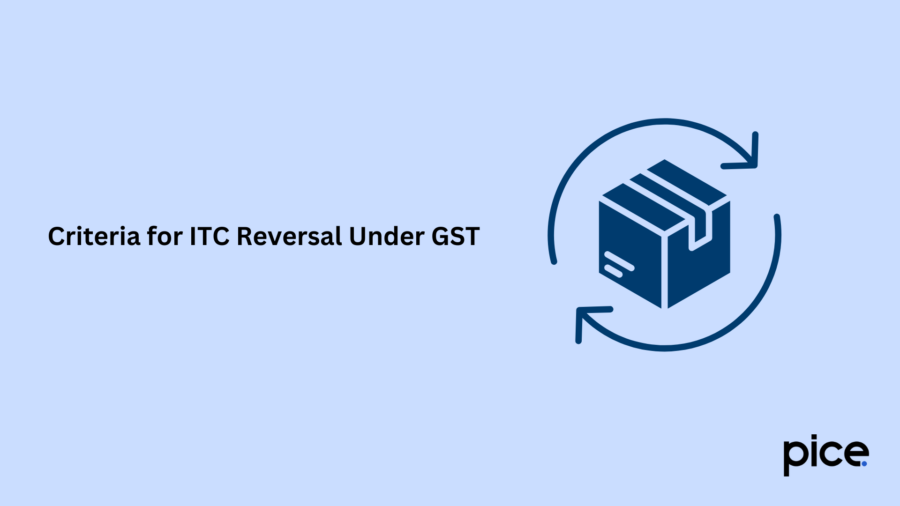
Here is a detailed overview of the conditions under which ITC Reversal is mandatory:
· Rule 37: ITC Reversal for Non-Payment of Consideration
CGST Rule 37 implies that if any individual taxpayer misses out on paying the supplier an inward supply of goods and services for which the input tax credit is utilized, he must reverse the ITC with interest payable. However, this reversal must take place within 180 days from the date of issuance of the invoice.
· Rule 37A: ITC Reversal for Non-Payment of Tax by Supplier
Under Rule 37A, ITC is claimed by the taxpayer in their GSTR-3B form based on the invoices received from a supplier. It is the due responsibility of the supplier to file their GSTR-1 return with reporting of outward supplies as mentioned in their invoices.
However, failing to file the GSTR-1 return by September 30 of the financial year, the ITC is claimed invalid. Thus, under this circumstance, the ITC must be reversed in their GSTR-3B form filed on or before November 30 of the following year. Penalties are, however, charged for failing to reverse the ITC on time.
· Rule 38: ITC Claims by Banking and Financial Institutions
Following the CGST Rule 38, if any banking or financial company, including an NBFC (non-banking financial company), who is involved in the supply of goods and services through accepting deposits or advancing loans fails to comply with the provisions under Section 17(2) is mandated to reverse about 50% of the input tax availed in Form GSTR 3B.
· Rule 42: Determination and Reversal of ITC for Inputs and Services
CGST Rule 42 is associated with the reversal of input tax credit on non-payment of supplier. This reversal is however mandatory to be made within 180 days from the date of issuance of the invoice. The ITC reversal is calculated considering the below formula:
a) The total input tax applicable on input goods and services in the defined tax periods is denoted as “T”
b) The amount of input tax, out of "T" which is attributable towards the use of input services, is meant to be used exclusively to meet definite purposes other than business and is denoted as "T1."
c) The amount of input tax, out of "T", which is attributable towards the use of input services and is used effectively for effecting exempt supplies, is denoted as "T2"
d) The amount of input tax, out of “T”, attributable towards the use of inputs and input services on which there is no availability of credit under Section 17(5), is denoted as “T3”
Thus, the amount of input tax credit received by the electronic credit ledger of the registered person, denoted as "C1" is calculated as:
C1 = T-(T1+T2+T3)
The amount of input tax which is attributable to inputs and services and is utilized for effecting supplies but also includes zero-rated supplies, is denoted as "T4".
The input tax credit remaining after attribution of the input tax credit, commonly known as common credit, denoted as 'C2' is calculated as:
C2= C1-T4
The amount of input tax credit attributable towards exempt supplies, denoted as D1 is calculated as:
D1 = (E/F)*C2
Where E stands for the aggregate value of exempt supplies during the specific tax period
And F denotes the total turnover in the respective state of the registered person during the definite tax period
The amount of tax credit input attributable towards non-business purposes is denoted as D2 = 5% of C2
The remaining common credit attributable for meeting the business purpose, rather than non business purposes, other than exempted supplied denoted as C3 is expressed as:
C3 = C2-(D1+D2)
Considering the above calculations, D1 and D2 are categorized as reversible ITC.
· Rule 43: ITC Calculation and Reversal for Capital Goods
CGST Rule 43 is concerned with the reversal of the amount of input tax credit on input goods and services on account of exempt supplies. The formula applied for the ITC reversal is as follows:
The amount of input tax credit attributable to a tax period on capital goods during useful life, denoted as ‘Tm’ is further calculated as Tm = TC / 60
The amount of credit attributable towards exempted supplies is denoted as Te = (E/F)*Tr
Where E stands for the aggregate value of exempt supplies during the tax period and F denotes the turnover of the registered person during that tax period.
Thus, Te as calculated will provide the ITC with respect to capital goods mandatory to be reserved or added to tax liability.
· Rule 44: Credit Reversal in Special Circumstances
CGST Rule 44 is associated with input tax credit reversal on non-taxable supplies, that includes stocks and labour charges.
The amount of tax credit input contained in stocks, inputs in semi-finished and finished goods held in stocks as well as capital goods held in stocks are further categorized as:
a) For inputs contained in stocks, the input tax credit is calculated based on the invoices on which the registered taxable person has availed credit
b) For capital goods contained in stocks, the eligible input tax credit is computed on a pro-rata basis, considering the useful life as five long years.
Conclusion
To conclude, gaining a proper understanding of managing common tax credit in GST is crucial for businesses to stay compliant and financially stable. Through accurate calculation of the proportion of credit for inputs utilised, businesses and taxpayers can avoid interest payable and penalties for incorrect claims.
Furthermore, abiding by the GST rules helps in fostering transparency and assists in further reporting of taxes. With the gradual evolvement of GST, following the common guidelines on the common credit C2 note will enable businesses to streamline their operations and contribute towards a fair taxation system.
Maintaining a correct ITC might be challenging, as incorrect claims might impact the output tax liability. Thus, to keep pace with the desired rules and regulations, consult with an expert and refrain yourself from negative taxation.
💡If you want to streamline your payment and make GST payments, consider using the PICE App. Explore the PICE App today and take your business to new heights.
 By
By 







